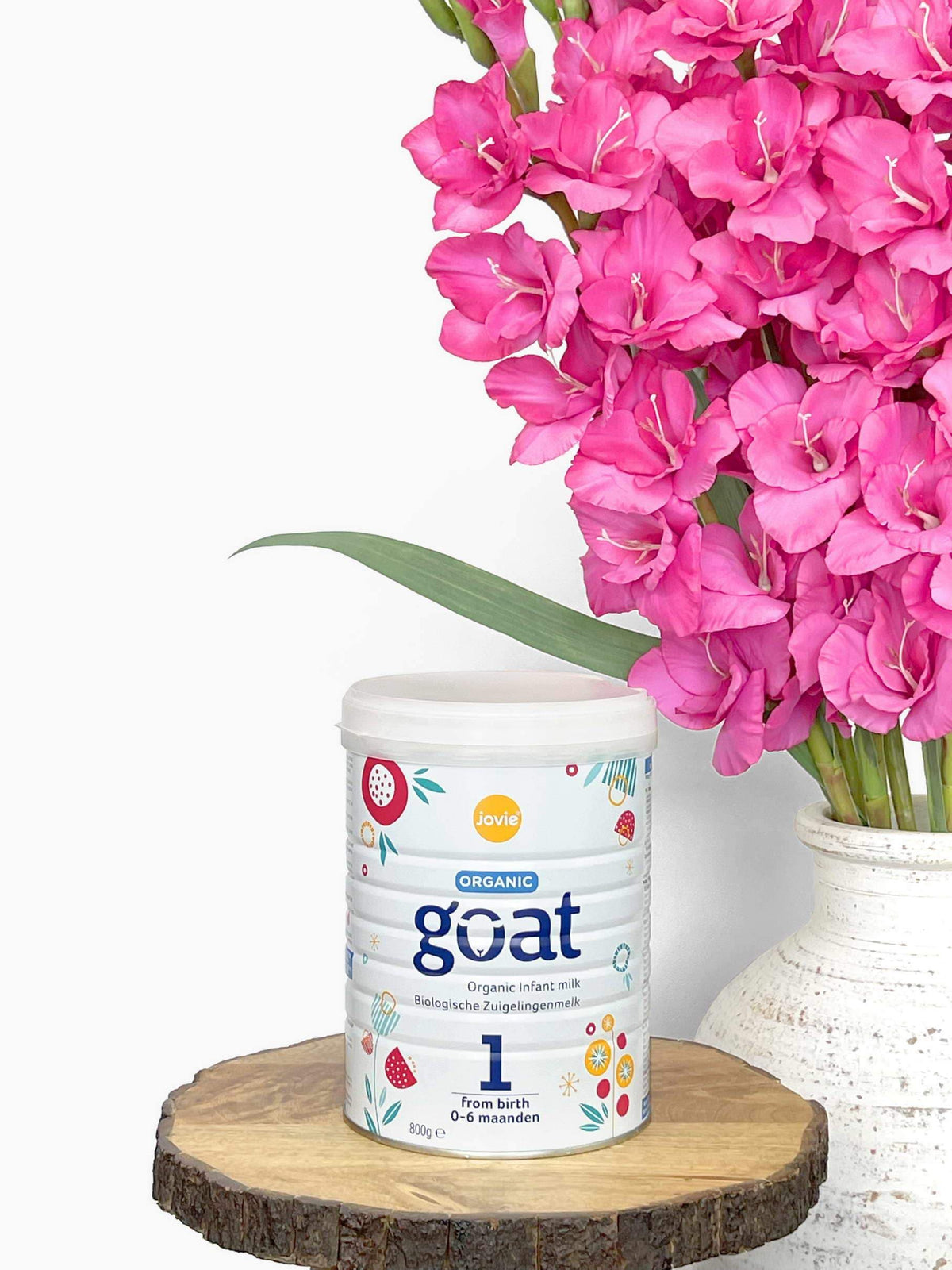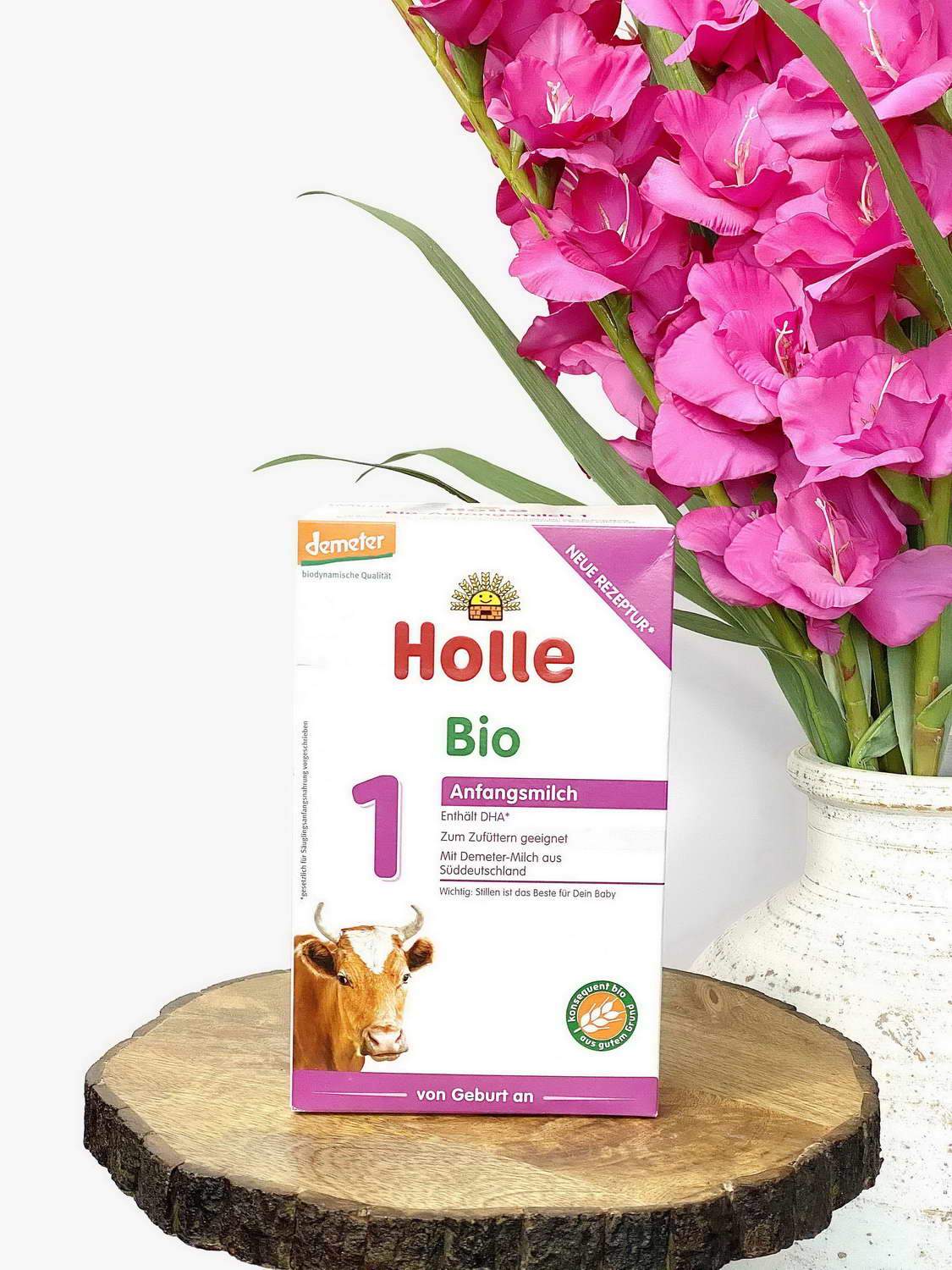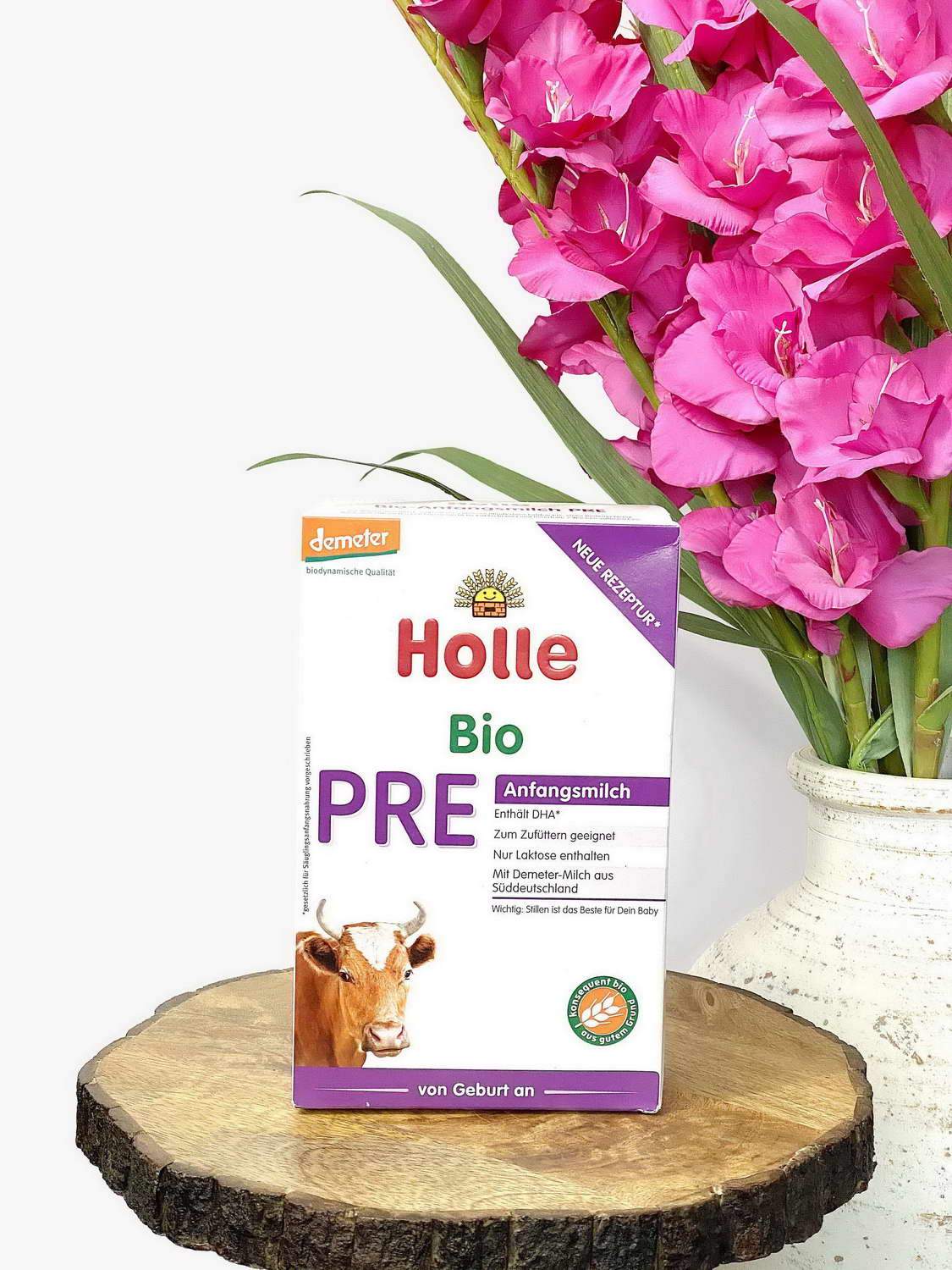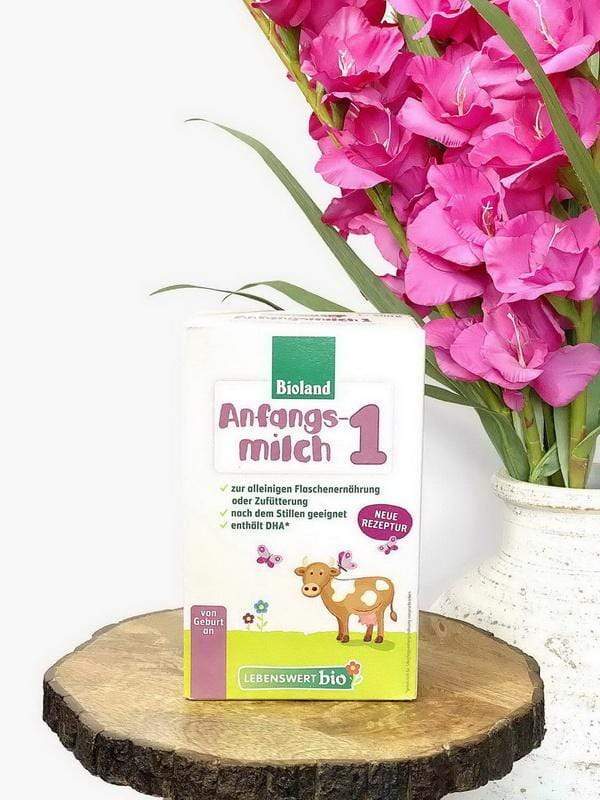Transitioning from breast to bottle is a very personal and sometimes heart wrenching decision. Research confirms that breast is best, but there are many situations when introducing formula is necessary for mom and baby.
As you know, a baby's brain development relies on receiving all the nutrients the body needs to feed its living cells plus extra for growth. Meeting the nutritional needs of the baby is one of the most important decisions parents face.
Stopping Breastfeeding: When and Why
- Prolonged separation- Pumping mommas milk is not always effective or practical.
- Medical- There are medications that can pass through breast milk as well as infectious diseases or maternal substance abuse that can pose great risk to premature babies, newborns, and babies who are medically unstable.
- Metabolism- When a baby is born with an error of metabolism and can not metabolize sugars in human milk or standard cow’s milk formula.
- Developmental and physiological- Baby’s ability to feed at the breast can be compromised from birth.
- Delayed milk production in mom.
- Breast physiology- Sometimes prior breast surgery or breast issues can result in poor milk production.
- Intolerable pain during feedings- When mom seeks intervention and finds no relief.
- Mental Health- Pre existing or postpartum conditions when mom needs to take care of self differently.
Transitioning Baby from Breast to Bottle
The first time you supplement from a bottle is the beginning of weaning from the breast to the bottle. It does not need to be all or nothing.
Remember to be gentle with yourself, a change in feeding methods can be tricky.
How do you stop breastfeeding? Slowly!
For mom the number one reason to take it slow is to avoid engorgement, clogged milk ducts, and mastitis. As you offer your baby more bottles, your milk production will gradually decrease, allowing your body to adjust.
For baby breastfeeding represents not only nutrition but is a source of comfort. Carefully observing which feeding seems the least important to your baby will help you decide which feeding will be the first change.
After a couple of days, you can substitute another feeding.
How to Wean Breastfed Baby
If you are able, it is best to hold off on weaning until any major life changes have passed. Change and stress can be hard enough on your little one. Once your baby and family have adjusted to any new circumstances, then you can go ahead and make the switch.
1. Enlist Help
Initially baby will be confused with the change and may become clingy and fussy. An extra pair of arms to snuggle and comfort will go a long way.
Asking your partner or a caregiver to give the initial bottles while mom is in another room can help make the transition smoother. Babies know the smell of breast milk and the comfort of the breast. When mom is around it may be more of a struggle for baby to take a bottle.
2. Night Time
Nap and bedtime switch from breast to bottle is often a process.
If the child is sleeping with you, you might consider moving your little into their own bed and allowing your partner or another family member to help by taking over sleep-time routines.
Consistency is key. Night weaning is an adjustment for your baby, and your little will get the message about the new normal faster if you have a plan and stick with it.
How to Introduce Formula to Breastfed Baby
Even baby formulas carefully designed to mimic breast milk will only come close to the same taste and texture.
If you are able to pump bottles for your baby initially, it will help to have the familiarity of breast milk while transitioning to a baby bottle. When your baby takes to the bottle more readily, it will be time to introduce formula mixed with breastmilk.
Keep in mind that it will be necessary to make sure that you’re giving your baby a bottle in place of every single feeding that you change. So if your baby typically nurses 8 times per day, they’ll still need to receive either breast or bottle the same amount of times.
Best Transition from Breast to Bottle Baby Formula
HiPP Dutch Stage 1
Age: 0-6 months
Size: 800g / 28.22oz
Why Choose?
Prebiotics & Probiotics for healthy digestion, No Maltodextrin, Skimmed Milk
Best Bottles for Breastfed Babies
When switching from breast to bottle it can be tough to decide which bottle is best.
To ease the transition from breast to bottle, it is recommended that moms use a baby bottle that closely mimics the shape and feel of the breast. Start with a baby bottle that is wide and has a soft nipple.
A higher flow nipple is also recommended when switching from breast to bottle. Bottles that make milk readily available will be more inviting for baby.
Be prepared to try a few baby bottle brands and nipple shapes before you find the right fit.
Most importantly, try not to get discouraged when your baby rejects a bottle it will take time.
Best Baby Formula
When switching from breast to bottle, you want the healthiest alternative to breastmilk. A formula that is 100% organic, eco-friendly, and has no hidden ingredients is the ideal solution.
Organic European baby formula has the high quality ingredients, sourced from organic farming practices, and is held to the strictest regulations.
You can feel confident knowing European organic formula manufacturers do not use corn syrup, glucose, fructose, rice syrup, table sugar (sucrose) or soy.
Copying breastmilk as closely as possible, European baby formula delivers a superior product in natural texture, smell, and taste.
Organic Baby Formula
My Organic Company has the perfect European baby formula to meet every nutritional need and stage of your baby's first years.
- Cow milk based baby formula- Whole cow milk protein-based formulas and skimmed milk formula options. The carbohydrate - lactose - in these special formulas are sourced from organic, grass fed cows.
- Goat milk formula- Containing a tenth less lactose than cow's milk, goats milk formula provides a healthy alternative for babies that are intolerant to dairy.
- HypoAllergenic baby formula- This organic baby formula is perfect for babies who have allergies or sensitive stomachs. It is also right for the little that has acid reflux, upset stomach, spitting up, or frequent skin rashes.
- Sensitive babies- For babies that have digestive and food sensitivities, these are the right formulas.
The special design of all our baby formulas offer your baby the necessary eco-friendly, organic nutrients your baby deserves.
Remember, not every formula is right for every baby. When choosing your formula, make sure to try one box/can at a time. You don’t want to buy in bulk until you know your baby does well on that formula brand.
Weaning Baby off Breast: Age-by-Age Guide
The decision of when to move baby from breast to bottle is a personal one, and every mother should do what works best for herself and her baby. Weaning from breast to bottle tends to be easier when you are consistent and follow your baby’s cues.
0-3 Months Weaning
The good news is often the earlier a baby is weaned from breast to bottle the easier it will be. Start slowly, allow baby to get well acquainted with the bottle, which can be done by offering it before each time you breastfeed.
When you feel like your newborn is ready, consistently replace one feeding a day with a baby bottle of warm breast milk or baby formula until finally tapering off nursing completely.
Bottle-feeding at this age is best when it closely mimics breastfeeding. This allows baby to be comfortable while making sure all your littles nutritional needs are met.
Encouraging your newborn to latch on to the baby bottle the breastfeeding way, by bringing the nipple up to the baby's nose and then stroking the nipple gently down to the baby's mouth, will allow your little to latch more naturally.
Just like breastfeeding, switching sides halfway through the bottle builds continuity and ensures a different view and perspective for your baby. Watch for babies' hunger cues and feed on demand, not on a schedule.
This helps to make sure baby is calmer and not in a frenzy.
4-6 Months Weaning
You baby is more attached to breastfeeding at this age. Unlike the newborn stage your little is starting to find comfort as well as nutrition in the breast.
Since baby has become more aware of their surroundings, distraction is a good strategy.
Watch for when your baby is most content during the day and start offering a baby bottle at that time. Over the next several weeks, gradually replace feeding from breast to bottle until completely switched.
Consistency is important. Even a little one that has fought a bottle in the past will opt to feed given enough patience.
6-12 Months Weaning
As soon as your baby is able to sit up, the weaning process can be helped by offering solid foods. Since your baby will get calories elsewhere, nursing will naturally be less often. This milestone can help the introduction of a bottle.
When ready, offer your little one finely mashed banana or pureed sweet potato. While your baby is eating you can offer a baby bottle with warmed formula.
Offering your baby a bottle the same time everyday for several days will help establish a new routine. Establishing a new way to eat will help gradually replace each feeding with a bottle.
How to Wean Baby off Breast for Comfort
Sometimes, when switching from breast to bottle, you may not have the luxury of taking it slowly. You may have to discontinue breastfeeding more quickly than you wish.
Here are some tips that can help:
Weaning Baby off Breast: For Mom
- Wear a bra that holds your breasts in place and close to your chest.
- Use ice packs and over counter pain relievers to help with inflammation and pain
- Use hand expression and hot showers to ease engorgement. Do this sparingly so you don’t continue to stimulate production.
- You will leak breast milk. Keeping a supply of breast pads close until this stage passes will help.
- You will experience some hormonal fluctuations. Take care of yourself. Drink lots of water and sleep when you can.
- Enlist help. Your body will be hurting, you will have hormonal crashes and you may be sad as you are ending a journey. Reach out to your partner, family, and friends for support.
- If you feel that depression creeps in and you can not shake the black cloud feeling, please talk to your doctor.
It may take as little as a couple of days or up to a few weeks to stop producing milk. For some, you may still have let-down sensations and leaking from the breast up to a month before your milk dries up completely.
Weaning Baby off Breast: For Baby
Your baby may refuse to take a bottle at first, especially if you have never tried one before. Your little may be fussy, sad, or even angry at you for not letting them breastfeed.
- Try a pacifier. This can help ease babies' natural need for sucking.
- If your child has a special blanket or security item, it can bring comfort during this time.
- Expect digestive changes. Breastmilk poop is a lot different in look and smell than formula poop.
- Now is a great time to let your partner, family, and friends get in some extra snuggles.
- Remember to give the baby some time to adjust to the formula prior to switching brands. It can be very hard switching from brand to brand quickly. If you don’t think your baby is doing well on the formula, give it a week. Unless your baby experiences severe reactions (allergic reactions, breathing issues, etc.), don’t switch formulas quickly.
Remember this time will pass. Replacing breast feeding sessions with cuddling, rocking, singing, and being together will help ease the transition for both mom and baby.
Support You Need
Having a baby is a journey of ups and downs. My Organic Company wants you to know we will be here for you every step of the way.
We're here for you not only with the very best Organic European Baby Formula, but also with a space we created just for you. A place for you to make connections, get advice, and find support.
Check out the Facebook page for more information!














